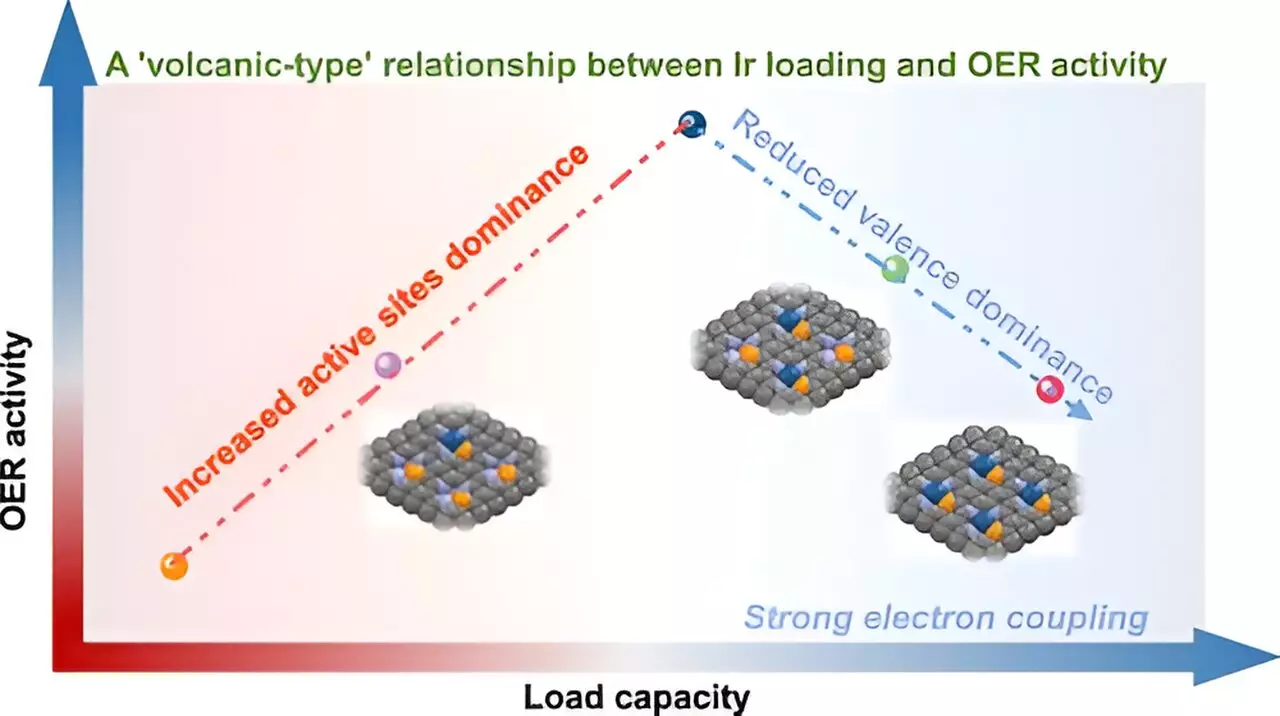In the realm of catalysis, the emergence of single-atom catalysts (SACs) has heralded a transformative approach to enhancing chemical reactions. The recent study helmed by Prof. Yan Wensheng from the University of Science and Technology of China (USTC) has illuminated critical dynamics within these catalysts, particularly regarding metal loading and their efficacy in the acidic oxygen evolution reaction (OER). This research is not only a testament to academic rigor but also opens doors toward practical applications in energy conversion technologies.
The Complex Challenge of Metal Loadings
Traditionally, crafting SACs that maintain atomic-level dispersion while achieving high metal loadings has posed significant challenges. In the study, the researchers undertook the task of developing Ir single-atom catalysts, cleverly employing a P-anchoring technique which facilitated the synthesis of catalysts with metal loadings from a modest 5% to an imposing 21%. This range is crucial because it exemplifies the balance between maximizing reactive sites and preventing clustering—an essential hurdle in SAC development.
Decoding the Volcano Relationship
Central to the findings is the intriguing “volcano-type” relationship that was observed, a concept that contravenes conventional expectations of linear correlations in catalysis. While increasing metal load generally suggests an escalation in catalytic activity, this study unveiled a more nuanced narrative where initial increases in Ir loading enhanced efficacy, but exceeding a specific threshold led to a paradoxical decline in effectiveness. Evidently, as neighboring Ir atoms intensified their interactions, this altered their valence state adversely, thereby undermining the catalysts’ intended impact.
The research squad employed state-of-the-art techniques, including synchrotron radiation X-ray Absorption Spectroscopy (XAS) and X-ray Photoelectron Spectroscopy (XPS), to meticulously delineate how these interactions unfold on a microscopic level. This empirical approach provides a more profound understanding of the factors at play, steering the future designs of SACs toward enhanced performance without succumbing to diminished returns associated with excessive metal loading.
Implications for Future Catalysis
The implications of this research stretch far beyond academic intrigue; they touch on the very foundations of sustainable practices in chemical processes, especially in energy generation and conversion. By pinpointing an optimal range for metal loading, Prof. Wensheng’s team effectively lays down a roadmap for the formulation of more efficient and affordable catalysts. Such advancements are instrumental in driving down costs and improving the viability of green technologies.
In a world grappling with energy sustainability, insights like these not only represent incremental scientific advancements but also a seismic shift in our capabilities to engineer materials that can perform under stringent conditions. The evolution of SACs stands as a beacon of hope for achieving cleaner and more effective catalytic processes, highlighting that the path forward is not merely through greater quantity but striking the right balance in quality.


Leave a Reply